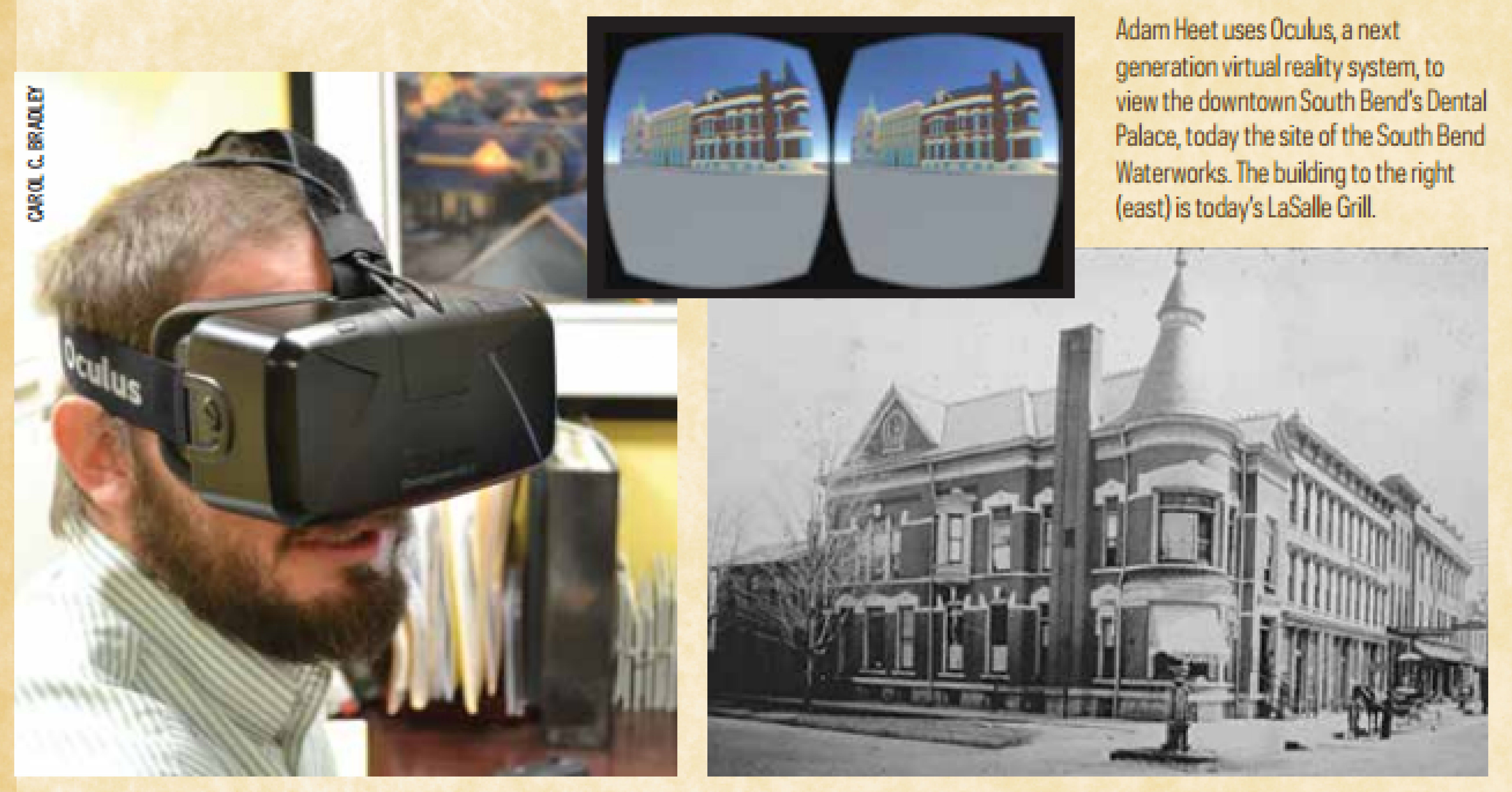By: Carol C. Bradley, NDWORKS
Adam Heet is walking down Main Street in South Bend, circa 1925, with the aid of Oculus, a next-generation virtual reality system designed for video gaming.
The building he’s looking at is the Moore Building, also known colloquially as the “Dental Palace,” demolished in 1931 (see photo at right). The building stood on the site where the South Bend Waterworks building is today, and just to the right in the photo (east) is the building that now houses the LaSalle Grill.
The Oculus is basically a stereoscope, says Heet, digital project specialist (“or toy master, if you wish”) in the Hesburgh Libraries Architecture Library. “It’s actually a video game interface with a better graphics card and more memory. It’s not a new technology, but it’s a new presentation of it,” he says.
The virtual experience is part of a larger project, Building South Bend: Past, Present & Future— which includes a website, buildingsouthbend. nd.edu, a mobile app (Downtown SB, free in the iTunes Store) and a 3-D printed model of South Bend’s downtown in the 1920s.
 Adam Heet uses Oculus, a next generation virtual reality system, to view the downtown South Bend’s Dental Palace, today the site of the South Bend Waterworks. The building to the right (east) is today's LaSalle Grill.
Adam Heet uses Oculus, a next generation virtual reality system, to view the downtown South Bend’s Dental Palace, today the site of the South Bend Waterworks. The building to the right (east) is today's LaSalle Grill.
The project grew out of a collaboration with South Bend’s Historic Preservation Commission (HPC) four years ago, says Jennifer Parker, architecture librarian. “We were brought in as consultants for the HPC on the preservation of architectural documents—they had discovered a massive collection of historic blueprints and architectural standards for South Bend.”
The library developed a three-part proposal centered on preserving and protecting the historic documentation; developing links between the library, the HPC and the History Museum; and making available and promoting South Bend’s historic urban architecture.
The Downtown South Bend app was developed by Historic Urban Environments/Notre Dame (HUE/ND) the Hesburgh Libraries’ Historic Urban Environments Lab. HUE, says Parker, is an interdisciplinary team of architects, computer scientists, librarians, anthropologists and others across the University whose goal is to create new tools to study the built environment. Students conducted much of the project’s research.
Building South Bend launched in late May as part of South Bend’s 150th birthday celebration. The 3-D model is now on permanent display at the History Museum, 808 West Washington Street. The team’s previous project was SPQR-ND, an iPhone and iPad app interpreting the Roman Forum through early architectural publications.
“Building South Bend has tons of new features,” says Parker. There are panoramic views, the 3-D models, narrations, live maps of downtown South Bend and then-and-now photos that can morph from the old building to today, and back again. The project will continue to expand over time, with the next focus on moving east to Michigan Street and then to South Bend’s historic districts.
The virtual experience is not available to the public yet, but Heet is happy to show the system to visitors. Email him at aheet@nd.edu to set up an appointment. Additionally, you can watch the 3-D printer in action in the lobby of the library in Bond Hall.
Visit the Hesburgh Libraries’ Center for Digital Scholarship (library.nd.edu/cds) to see ways the Libraries are exploring new technologies to transform research, teaching and scholarship.
Article featured in the July 2015 edition of ND Works.